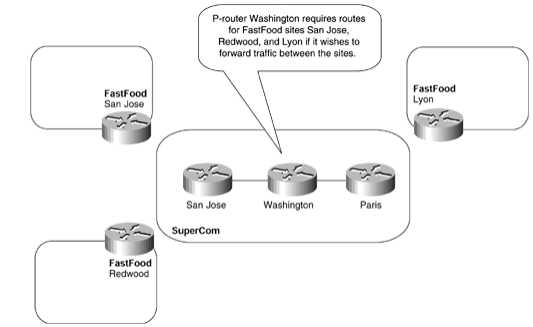CCIE SP MPLS FAQ: Guidelines for the Deployment of MPLS/VPN
Q1. In an IP routed backbone, why is it necessary for P routers to hold full external routing information?
Answer: P routers forward packets based on their destination IP address. If this address is not within the forwarding table the packets are
Q2. How does the full routing requirement change with the introduction of MPLS into the core?
Answer: Because MPLS forwards based on labels, the IP destination address information is no longer required on routers performing pure label switching, except when Multicast routing is deployed.
Figure: Full Routing Requirement for P Routers
Q3. What are the two advantages to carrying external routing in BGP rather than in the service provider IGP?
Answer: Stability so that flapping within a customer site does not affect the backbone. The size of the internal routing structure within the service provider can be kept to a minimum.
Q4. When running OSPF, why is it necessary for the PE loopback addresses to be a /32 host address?
Answer: OSPF always sets a loopback to a /32 regardless of its configured mask, which causes a loss of connectivity because TDP/LDP advertises the address with the configured mask, thus causing a mismatch.
Q5. Why can’t PE loopback addresses be summarized within the backbone?
Answer: They cannot be summarized because if they were, the end-to-end LSP between PE routers would be broken, causing a loss of connectivity for the VPN client.
Q6. During the PE import process, what can be used to filter out certain routes?
Answer: An import-map can be used to filter on IP prefix, standard community, or extended community.
Q7. Is it possible to advertise routes from the same VRF with different RT values?
Answer: Yes. Through the use of export-maps.
More Resources
